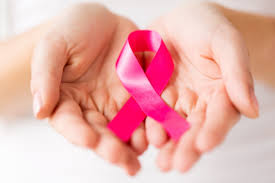
 Cancer is one such disease hearing the name of which can give you cold sweat. It is not a new disease and is not limited to a region, age or gender. Most of the countries are conducting research on war footing to deal with it. As we have already discussed that cancer is an umbrella term in which are included more than 100 different types of the disease. One such type that can actually be difficult to handle is Blood Cancer. Considerable improvements have been observed in survival rates of patients diagnosed with blood cancer.
Cancer is one such disease hearing the name of which can give you cold sweat. It is not a new disease and is not limited to a region, age or gender. Most of the countries are conducting research on war footing to deal with it. As we have already discussed that cancer is an umbrella term in which are included more than 100 different types of the disease. One such type that can actually be difficult to handle is Blood Cancer. Considerable improvements have been observed in survival rates of patients diagnosed with blood cancer.
On hearing the news that you or someone close to you has been diagnosed with blood cancer may leave you shocked, distressed and confused. There may be plethora of thoughts and questions clouding your mind. Let us approach the matter in a systematic manner. The first step is to understand what is blood cancer and its different types.
What is Blood Cancer?
Blood Cancer is a medical condition that affects the functioning and production of blood cells. It is a type of cancer that attacks the blood, the bone marrow or the lymphatic system. The natural process is that stem cells in the bone marrow mature and develop into different three types of blood cells – RBC’s (Red Blood Cells), WBC’s (White Blood Cells) and Platelets and in blood cancer this normal process is altered. Abnormal blood cells or cancerous cells grow uncontrollably or prevent the blood cells from performing their normal functions like fighting infections and stopping of bleeding. Considerable improvements have been observed in survival rates of patients diagnosed with blood cancer.
Types of Blood Cancers
Broadly speaking there are three types of blood cancers –
The survival rates of blood cancer have increased considerably in the last few years. Early diagnosis makes the disease manageable and increases the chances of recovery.
Leukemia
Leukemia is a type of cancer that affects the blood and the bone marrow. In this type of blood cancer white blood cells are produced in an abnormal manner. A very high number of white blood cells do not allow production of red blood cells and platelets. Excessive white blood cells do not affect the body’s ability to fight infection in a negative manner. This form of blood cancer can be chronic or acute.
While acute forms of leukemia grow in a fast manner, chronic forms progress much slowly. There are two main types of leukemia – lymphocytic and myelogenous. In lymphocytic leukemia, lymphocytes ( a type of white blood cells) increase and in myelogenous, granulocytes (a type of white blood cells) increases. The exact causes of leukemia are not fully understood. Fatigue, weakness, anemia and pain in the bones are some of the symptoms of leukemia. Chemotherapy and radiation are the common forms of therapy that are used for treating leukemia. In some cases bone marrow transplants may be recommended.
Lymphoma
The second type of blood cancer is lymphoma. In this type of cancer the lymphatic system is effected. Lymphatic system is responsible for removing excess fluid from our bodies and production of immune cells. As discussed under leukemia, lymphocytes are a type of white blood cells that enable our bodies to fight infection. Lymphocytes that are abnormal are termed as lymphoma cells and these multiply and keep collecting in the lymph nodes and other tissues affecting the immunity system.
There are two main types of lymphoma – Hodgkin lymphoma and Non-Hodgkin lymphoma. While Hodgkin lymphoma spreads from one set of lymph nodes to others in an orderly manner, non-Hodgkin spreads in a non orderly manner. Some of the symptoms of lymphoma include swollen lymph nodes, pain in the chest, abdominal pain, fever and fatigue. Once again the exact causes of lymphoma are not understood.
Myeloma
The third type of blood cancer is myeloma. It is a type of cancer that affects the plasma cells. Plasma cells are white blood cells that provide the human body the ability to fight infection by producing infection fighting antibodies. Inability to fight infection leaves the body weak. The overgrown cells form a tumor in the bone marrow. Fatigue, frequent fractures and bone damage, frequent infections and unwarranted weightloss are some of the symptoms of myeloma. People who are above the age of 67 years are at a greater risk of developing this form of blood cancer. It has been more commonly observed amongst men than women.
References:
- http://www.hematology.org/patients/Blood-Disorders/Blood-Cancers/5229.aspx
- http://www.cdc.gov/features/hematologiccancers/
- Patient Information, Newly Diagnosed With a Blood Cancer, Leukemia and Lymphoma Research, https://leukaemialymphomaresearch.org.uk/booklet/newly-diagnosed-blood-cancer
– Please note that the article does not substitute for any kind of medical advice.











